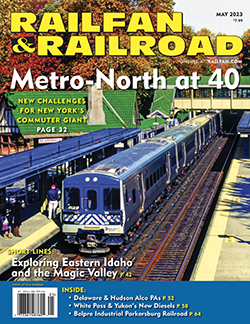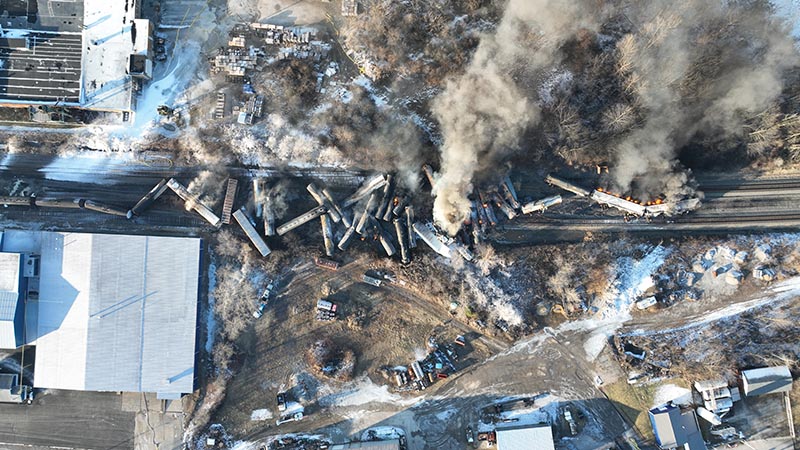 It is no secret that North America’s railroads are in trouble. The highlights alone are alarming. Following a spectacular February derailment in East Palestine, Ohio, Norfolk Southern has become a household name for all the wrong reasons. Over the last year, service on Union Pacific has degraded to the point that key shippers are demanding emergency service orders. Despite a friendly administration, Amtrak continues to suffer under equipment failures and crew shortages. And, last year, the entire national network very nearly shut down when labor unions, seeking the common decency of sick days to tend to their families, threatened to walk off the job. The solution came not from industry leadership, but when the federal government intervened to prevent the strike.
It is no secret that North America’s railroads are in trouble. The highlights alone are alarming. Following a spectacular February derailment in East Palestine, Ohio, Norfolk Southern has become a household name for all the wrong reasons. Over the last year, service on Union Pacific has degraded to the point that key shippers are demanding emergency service orders. Despite a friendly administration, Amtrak continues to suffer under equipment failures and crew shortages. And, last year, the entire national network very nearly shut down when labor unions, seeking the common decency of sick days to tend to their families, threatened to walk off the job. The solution came not from industry leadership, but when the federal government intervened to prevent the strike.
Railroad leadership has taken a rather public beating for the situation. Alan Shaw, CEO of NS, visited Ohio to awkwardly attempt to reassure residents. Instead, he ended up becoming a repeated subject of late night TV talk show jokes. UP’s CEO fared worse, though. In February, key investors succeeded in forcing Lance Fritz to resign, a scapegoat for the company’s woes.
How do we change the industry for the better? One idea that is frequently brought up by transportation analysts, wonky railfans, and even some railroad workers is a revival of the United States Railroad Administration.
A short history lesson: When the U.S. entered World War I in 1917, the nation’s rail network was made up of scores of so-called “Class One” railroads unable to manage the massive traffic brought on by defense activities. In response, Congress established the USRA, and for the next three years, operated the nation’s railways. The USRA put into service nearly 2,000 new locomotives and a further hundred thousand new freight cars. Dwell times plummeted, congestion eased, rate inequity was eliminated, and the rail network ran more efficiently than it ever had.
A half-century later, and the railroads were again in crisis. In 1970, Penn Central — a massive railroad formed from the merger of two overlapping rivals — failed, and became the largest corporate bankruptcy filing in U.S. history. To fix it, Congress stepped in, forming the United States Railway Association in 1973. This second USRA hired the best minds in the railroad industry and set about redrawing the map of one-quarter of the country’s densest railroad network. The result was the 1976 combination of Penn Central and another five ailing companies into Consolidated Rail Corporation, better known as Conrail.
The second USRA was an unqualified success. Within five years, the government-run carrier began to show modest profits. In 1987, at just 11 years old, the USRA privatized Conrail, by then a valuable property that more than paid back its initial investment as well as became one of the best-run railways on the continent. With the sale complete, USRA once more faded from existence.
Is it time for another USRA? Perhaps not yet. But if service continues to degrade? Or — and let us hope this never happens — we see an even worse disaster than East Palestine? It wouldn’t take much for talk of another USRA to go from idle fantasy to real legislation.
If it did, what might “USRA III” look like? Full nationalization seems unlikely, though initially you might see a network governed by emergency service orders issued by Martin J. Oberman’s Surface Transportation Board. More likely is a skeleton national network, the nation’s first true transcontinental lines connecting major points from coast to coast. The map probably wouldn’t look too dissimilar from Amtrak’s long-distance system, in part for the same reasons of coverage. And what’s left out? How about dozens of new regional carriers, each operated by managers both literally and figuratively closer to the shippers they serve.
If you squint hard enough, you can almost see it.
—Alexander Benjamin Craghead is a transportation historian, photographer, artist, and author.


